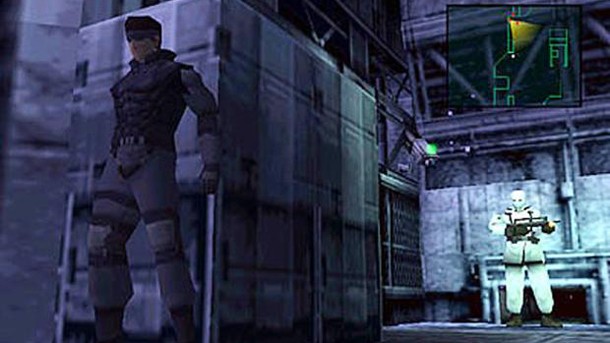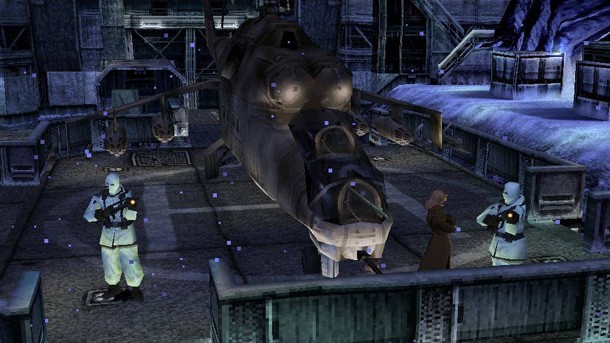The Essentials – Metal Gear Solid

The Essentials is Game Informer's weekly recurring feature that takes a look at the most important games the industry has to offer. These games aren't just a ton of fun: Their quality, innovation, and industry influence make them must-play experiences for anyone who wants a greater appreciation of our interactive medium.
This weekend we're taking a look at Metal Gear Solid. It was not Hideo Kojima’s first game, and it wasn’t the first Metal Gear game, but it was the first game that allowed Kojima to really flex his cinematic muscle. It offered an unprecedented amount Hollywood-quality storytelling, and recognized the importance of actor performance in an age where two snippets of repeated dialogue were considered more than enough.
Release Year: 1998
Publisher: Konami
Developer: Konami Computer Entertainment Japan
Released For: PlayStation
Released in 1998, Metal Gear Solid marked a return to the series after an eight-year hiatus. The previous Metal Gear title in the series, Metal Gear 2: Solid Snake, released exclusively in Japan in 1990 for the MSX home computer. Comparing the two in terms of technical proficiency showcases a huge disparity, but many of the game’s core stealth and combat mechanics translated smoothly into the new 3D setting.
Metal Gear Solid is credited with popularizing the stealth genre. Video games had yet to overcome the temptation to fill a screen with as much action as possible and simply empower the player with more and more firepower. Metal Gear Solid asked players to avoid combat and try to survive in a setting where the less the enemy knew of your presence the better you would fare.
Every room had to be approached with a certain level of preparation. You had to peek around corners, keep an eye out for cameras, be wary of the footsteps you left behind in the snow, and be careful about walking loudly on metal catwalks. We smirk at the A.I. of the stealth genre today where soldiers carefully pace a predictable path, but in our first Metal Gear Solid encounters, the idea that these typically mindless soldiers could quickly overpower you if you made a misstep went a long way in making them both believable and imposing.
The most memorable aspect of Metal Gear Solid, however, was its story and the way it was delivered. The game had an impressive run-time of cutscenes and they were all delivered using the in-game engine lending an important level of consistency between the gameplay and story. Most PlayStation games opted to create pre-rendered cutscenes, which created a wide disparity between the story moments and the gameplay. In Metal Gear Solid, moving between scripted moments and gameplay was seamless.
Outside of cutscenes, additional story was delivered through fully-voiced codec conversations. As the series has moved forward, many complain about the extended and winded nature of these long phone calls, but they are important for building and defining each and every character you interact with. Forgettable moments in other games, like saving your progress are turned into humanizing moments in Metal Gear Solid where you can talk to someone about the difficulty of your mission, and learn about the people who are supporting you. You may be alone on your stealth mission, but chatting on the codec gave you the feeling you weren’t alone, even if there was no one there to physically help you.

Metal Gear Solid also saw some of the first times director Hideo Kojima – now famous for his strange marketing and gameplay tricks – playing with the rules of narrative in an interactive world. The Psycho Mantis boss fight surprised players by looking into their memory card to discuss save data from other games. You also had to manually switch controller ports to prevent Mantis from reading your mind so you could defeat him. Other moments, like tracking down Meryl’s codec number by reading the back of the box art, represent an odd overlap of the real and virtual world that rarely see, even to this day.
It’s no surprise that Metal Gear Solid became one of the most influential video game franchises of modern gaming. As I mentioned previously, Metal Gear Solid was not the first in the series, but it was the one that forced a mainstream gaming audience to take notice and get excited about the stories video games could tell. It’s winded, complicated, and melodramatic, but it’s an undeniably engaging narrative that really could only be delivered in an interactive medium.
For more of the Essentials, click the banner below.

Get the Game Informer Print Edition!
Explore your favorite games in premium print format, delivered to your door.
- 10 issues per year
- Only $4.80 per issue
- Full digital magazine archive access
- Since 1991










